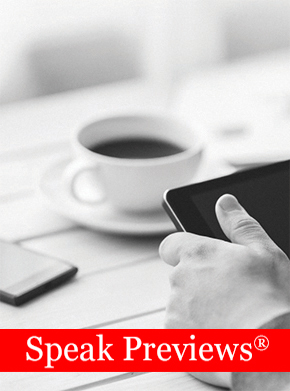Even as we sit quietly watching a movie or listening to a speaker, we are communicating. The position of our bodies, the expressions on our faces, the movements of our heads, arms, legs, and eyes all communicate information about our level of comfort, engagement, interest, and agreement. We broadcast many such messages unconsciously, but broadcast them we do.
We send them into a world populated by people who may receive them unconsciously and whose ability to notice and respond to them varies. Some people possess great sensory acuity—little escapes them. They intuitively incorporate a speaker's nonverbal messages into his or her verbal ones. Other people may not; they may not be as well attuned to the indications of mood, feeling, emotion, or intent that nonverbal communication expresses.
As a speaker or presenter, you are sending nonverbal signals by how you dress, by how you present your physical self. While you may not be cognizant of all your nonverbal signals, you can arm yourself with an awareness of how you might be perceived.
Your appearance is an important nonverbal message.
It takes only a few seconds for people to form an impression of you. And once they've formed it, they are not likely to change it quickly or easily. As you analyze your audience as part of your preparation, then, give some thought to how you want to appear and how you can achieve that goal. Make sure you will be sending the right signals from the moment your audience catches its first glimpse of you.
For most presentations, business professional clothing is best; it shows you are aware of and respect the corporate cultures within which your audience members work. You want your appearance to communicate that you are someone with expertise, ideas, and/or perspectives that will benefit your audience. Do note, though, that "business professional" varies from business to business. How you appear for a presentation at the annual meeting of an accounting firm might be radically different from the way you present yourself to a similar meeting at an innovative high-tech firm.
An interesting side note is that occasionally you might choose to violate these corporate dress mores in order to establish yourself as someone who's a little out of the corporate mold. If you choose to make yourself an exception by striding onto the stage flaunting an alternative style, make sure that you have the credibility and content to turn nonconformity into an advantage.
While it might seem that it should go without saying, it really doesn't: Favorable first impressions begin with personal hygiene and grooming. In general: clean and kempt. Whiskers neatly and completely shaven or trimmed. Hair combed and tidy and off the face. Clothes pressed and free of stains, rips, or missing buttons. Mustard-stained blouses and spots of sprouting chin hair won't communicate respect to your audience or inspire its trust. Nor will bracelets that jangle and earrings or belt buckles so large and shiny that they create a glare. Ditto pants or jackets or skirts or shirts so tight they pull or bunch or gap.
While you do need to recognize that other types of nonverbal communication—body position and stance, gestures, eye focus, facial expressions—also send messages that may coil just beyond consciousness but still affect listeners' perceptions, look first to your appearance. That's where your audience will be looking.



